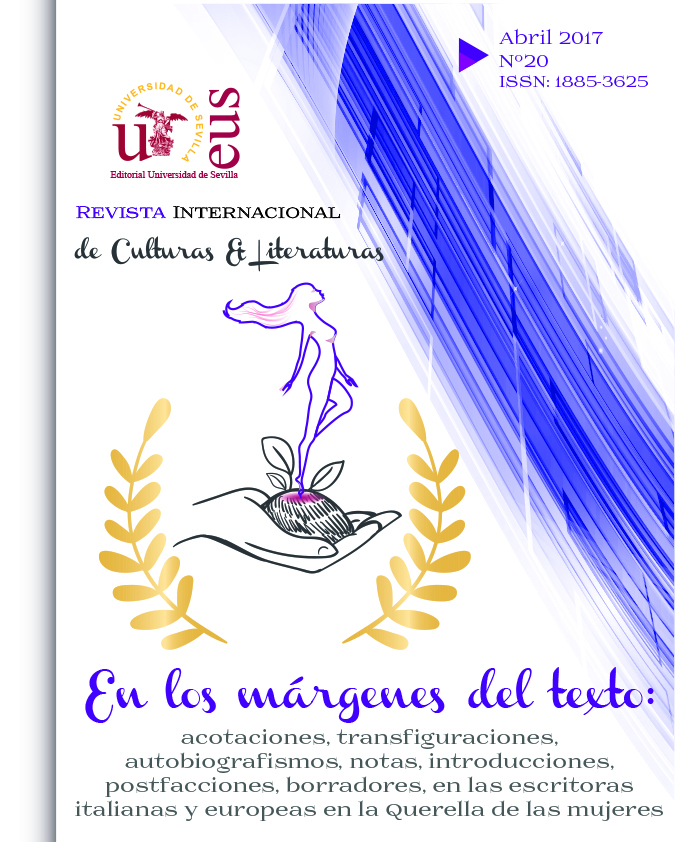The gender variable in language teaching in the multicultural classroom. ICT support
DOI:
https://doi.org/10.12795/RICL.2017.i20.02Keywords:
multiculturalidad, igualdad, género, idiomas, TIC, bloomAbstract
Multiculturalism is increasingly present in our schools and education centers nowadays. Several countries as Spain have welcomed a large number of immigrants since the 1990s, so that the Spanish educational system experienced an adaptation process to facilitate that this group is successfully incorporated into our classrooms. Achieving heterogeneity, that is, the various cultures coexisting together, is currently a main goal in schools. But we don’t have to forget that this struggle already existed: to reach full equality between men and women. By means of language teaching, this article studies if there currently exist a gender bias in the new multicultural classrooms, and how information and communication technologies, in addition with Bloom’s taxonomy use, act as a tool for establishing new learning objectives, and even achieve the basic principles of tolerance, respect and equality in education centers.
Downloads
References
Amo, M. C., “La educación de las mujeres en España: de la “amiga” a la Universidad”, CEE Participación educativa, 11, julio 2009, p. 9.
Cabrero J., “Bases pedagógicas del e-learning” Revista de Universidad y Sociedad del Conocimiento, Vol. 3, nº 1, abril 2006, pp. 3-4. Internet. 30-08-2016. <http://www.uoc.edu/rusc/3/1/dt/esp/cabero.pdf>
Churches A., “Taxonomía de Bloom para la Era Digital”. 2008. Internet. 19-09-2016. .
Flecha C.,“Desequilibrios de género en educación en la España Contemporánea: causas, indicadores y consecuencias”, Revista Internacional de Ciencias Sociales, nº 33, 2014, p.52.
Godeau D., Rinken S., Martínez de Lizarrondo A., Moreno G., La integración de los inmigrantes en España: una propuesta de mediación a escala regional, Documentos del Observatorio Permanente de la Inmigración. 2014. Internet. 02-08-2016.
Lomce, Ley Orgánica de mejora de la calidad educativa. Internet. 28-09-2016.
<[https://www.boe.es/diario_ boe/txt.php?id=BOE-A-2013-12886>
Mnisterio de Educación, Cultura y Deporte, Las cifras de la educación en España. Curso 2013/2014. Edición 2016, p. 8. Internet. 24-08-2016. < http://www.mecd.gob.es/servicios-al-ciudadano-mecd/estadisticas/educacion/indicadores-publicacionessintesis/cifras-educacion espana/2013-14.html>
Ruiz, S., Bonometti, P., “Las mujeres en América latina: indicadores y datos”. Revista Ciencias Sociales 126-127:75-87/2009-2010 (IV-I), 2010, p.77, Internet. 07-09-2016. <http://unpan1.un.org/intradoc/groups/public/documents/icap/unpan046955.pdf>
Saiz, A., “Mujeres y género en la sociedad china contemporánea”, J. Julià-Muné, (ed.), Visions de la Xina: cultura multimil·lenària, Lleida, Institut d’Estudis Ilerdencs de la Diputació de Lleida, 2009, pp. 169-190.
Sales, A., García R., Programas de educación intercultural, Desclée de Brouwer, Bilbao, 1997, pp. 11-19.
Song, S., “Multiculturalism”, E. N. Zalta (ed.), The Stanford Encyclopedia of Philosophy (Spring 2014 Edition), 2010. Internet. 02-08-2016.
< http://plato.stanford.edu/archives/spr2014/entries/multiculturalism/>
Suárez, L., Crespo, P., “Familias en movimiento. El caso de las mujeres rumanas en España”, Migracione,s 21 2007, pp. 247-248.
Terrón, T., “La mujer en el Islam. Análisis desde una perspectiva socioeducativa”. Revista El Futuro del Pasado, nº 3, 2012, pp. 237-254. Internet. 05-09-2016. <[https://dialnet.unirioja.es/descarga/articulo/3941216.pdf>
Unesco, educación en la escuela. Internet. 16-08-2016. < http://www.unesco.org/new/es/education/themes/leading-the-internationalagenda/education-for-sustainabledevelopment/gender-equality/>

